I used to LOATHE running. During the Covid-19 pandemic, I started running as an act of desperation — a way to stay active and enjoy the outdoors while quarantined. I quickly fell in LOVE. After 3 months I ran my first 5k. 3 months later, 10K. A year later, I ran my first half marathon. 13.1 freakin’ miles.
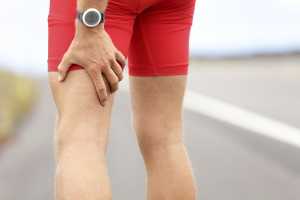 I took a week off of running after finishing my first Half. I needed it. A week later, I felt
I took a week off of running after finishing my first Half. I needed it. A week later, I felt
well-rested and recharged and headed out for an “easy 2 miles” around the neighborhood. Pain shot up my right leg almost immediately. Both legs felt like they were made of lead. Perplexed, I cut my run short and walked home.
I figured I was maybe still sore from the race. A few days later, I tried a run again. Same pain. Though this time I noticed my feet were also unusually sore.
A trip to the podiatrist a few days later revealed I had “post-tibial tendonitis” in my right foot (which can travel up the calf), and plantar fasciitis in my left foot. Two separate feet issues, both common for runners. I had done too much too soon with my Half training, and had done my feet in. No running for 4 weeks.
The only break from running I had taken in the 20 months since I had started was a 10-day break when I got Covid last summer. 4 weeks?!
Not surprisingly, I immediately noticed a difference in my physical and mental well-being. I soon gained a little weight, lost some muscle tone in my legs, and mild depression set in. Without running, it was much harder to keep my stress and mental health in check. Even walking short distances was uncomfortable. I tried to embrace biking but found it didn’t give me the same “high” as running.
At the one-month check-up, my podiatrist told me not to run for at least another 4 weeks, and to start physical therapy for my beleaguered feet. On top of that, he recommended investing in a custom orthotic (shoe insert) if I wanted to keep running. Custom orthotics, as it turns out, are not covered by insurance. $360 is the going rate.
I started physical therapy once a week and quickly found it helped my depression. It gave my running lapse a sense of a start and end. There was weekly “homework” (stretches to do at home) and each session got progressively challenging at a safe, sustainable pace. Talks with my trainer also became therapy. I gained a newfound respect for my body and a deeper understanding of the beautiful complexity of all bodies over those sessions, which I ended up attending for much longer than 4 weeks.
Through physical therapy, I learned the importance of strengthening my calves to avoid foot injuries, of wearing supportive footwear while running AND while not running, and how crucial stretching is both before and after running. The orthopedic specialist who fitted me for orthotics could tell I had a weak right hip from the way I sat in a chair. Physical therapy revealed this as well, which was ultimately what caused the “post-tib” condition in my right foot. I now make a concerted effort to do hip strengthening exercises on a regular basis. (Who knew that my hip strength could affect my feet, let alone how I run?!)
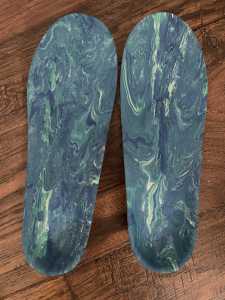
In April, after nearly 12 weeks of physical therapy, I started walking longer distances (1-3
miles). At the end of the month, I was finally cleared to start running again, after a total of 4 months off. I started completely from scratch, with day 1 of the Couch to 5K (5K runner) app, which I had started 2 years before. My new orthotics formed perfectly to my feet inside my new running shoes. I was finally able to experience what it was like to run without foot pain. It honestly felt like flying.
Once the euphoria of being physically able to run again died down, I was left with a stark reality. As a 41 year old average athlete, getting back into it was (and is) HARD.
Here’s what I’ve learned about getting back into running (or any physical activity) after an injury:
Listen to your body
Above all else, listen to your body. Pain is a message that should not be ignored! Same with fatigue. On days I feel tired, I start walking and tell myself I’ll run if I feel like it (usually after walking for 5-10 minutes I do, but not always). If I had learned the importance of listening to my body while training for a Half, I would’ve noticed the signs of doing too much too soon (I thought my shoes were too tight– when actually it was the start of tendonitis). Give yourself space and grace if you’re just not able to do it one day.
Make a plan with realistic goals
Once you’re committed to listening (and therefore respecting) your body, you’re ready to make a sensible plan. I have a runner’s journal where I pencil in my goal runs for the week. They rarely go as planned– often the day or mileage will change. So I erase my expectations, write in what actually happened, and look forward to other runs.
Lower expectations, increase praise
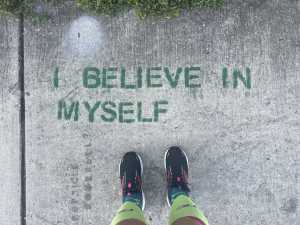 I signed up for a 5K race in late May, one month after I started running from scratch. I was not ready. I was barely running a mile. So I didn’t go. I lost the race fee, which was a donation for a worthy cause anyway. My inclination was to feel disappointed– but I stopped myself. Not going meant I was listening to my body and being more realistic (running 3.1 miles after starting back only a month ago? What was I thinking?!) It also meant I was avoiding re-injury (something my veteran runner friends warned me about tirelessly). I praised myself for being more sensible and then continued to work towards 2 miles.
I signed up for a 5K race in late May, one month after I started running from scratch. I was not ready. I was barely running a mile. So I didn’t go. I lost the race fee, which was a donation for a worthy cause anyway. My inclination was to feel disappointed– but I stopped myself. Not going meant I was listening to my body and being more realistic (running 3.1 miles after starting back only a month ago? What was I thinking?!) It also meant I was avoiding re-injury (something my veteran runner friends warned me about tirelessly). I praised myself for being more sensible and then continued to work towards 2 miles.
Trust the process
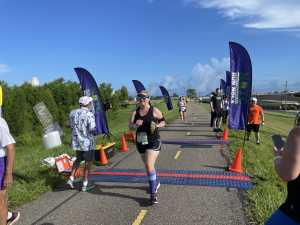
The recovery process is slow and frequently frustrating. I am nowhere near as fast as I
used to be, and my endurance is still much below where I was a year ago. It took me much longer to work back to a 5K this time. But my feet feel fabulous– and at least I’m still able to run. I feel much more body-aware, much more realistic about what I can do as a 40-something female running hobbyist.
Embrace gratitude
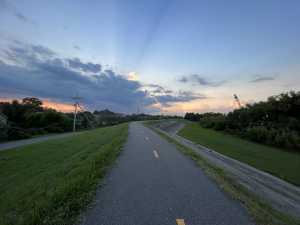 Embracing gratitude is an excellent antidote for the frustration that comes with having to
Embracing gratitude is an excellent antidote for the frustration that comes with having to
start back at a hobby you love from scratch, and also having to do it much more slowly. Instead of: Why is my heart rate so high? Why are my legs so sore? Try: I am privileged to have the time and ability to do this– to be outside, to be present, to be moving my body through space. To be working towards a new goal, however small or insignificant. To have the freedom to fail and try again. My four-month break from running gave me the perspective to not take any run for granted, and to appreciate my body for the miracle machine it is. And when it’s telling me to rest? Be grateful for that rest.
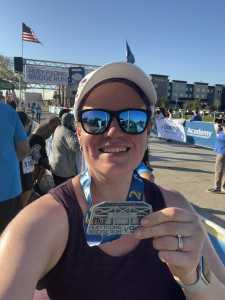
I struggle with all of the above tips all the time, but I’ve found that they’ve become mantras that help keep me going, now 6 months after I started back again. I am now running a 5K comfortably, and working slowly towards a 10K (slowly!). At my most recent race (the Huey P. Long 5K Bridge Run) I started with lower expectations (“finish” and “try to run most of it”) instead of a time I was trying to beat. Yes, I still want to run a half marathon again someday (or even a full!), but only if and when my body lets me. In the meantime, I’m doing my best to appreciate what my body can do now, instead of what it used to do or what I wish it could do. Gratitude forces us to appreciate the present, and that is truly a priceless gift.
















